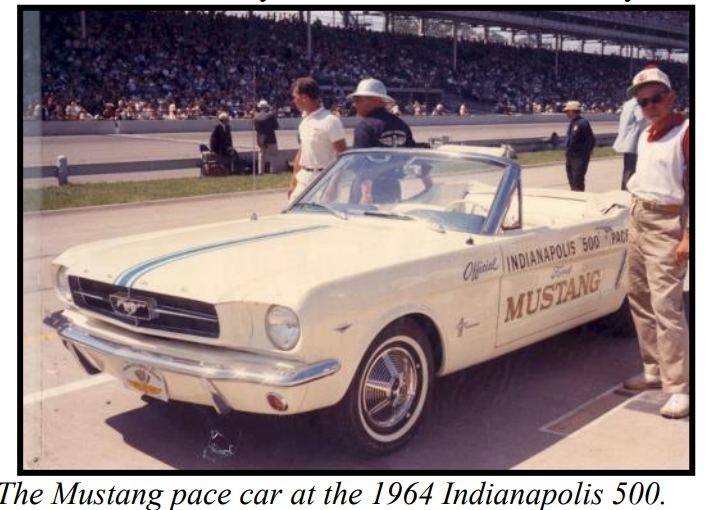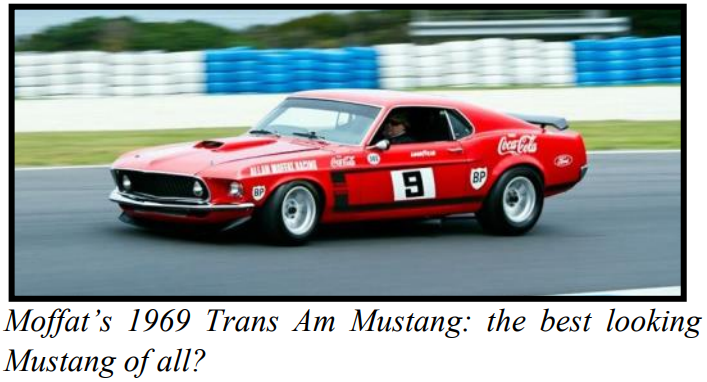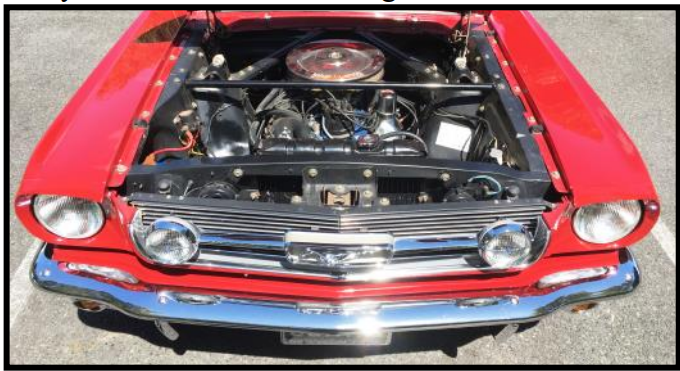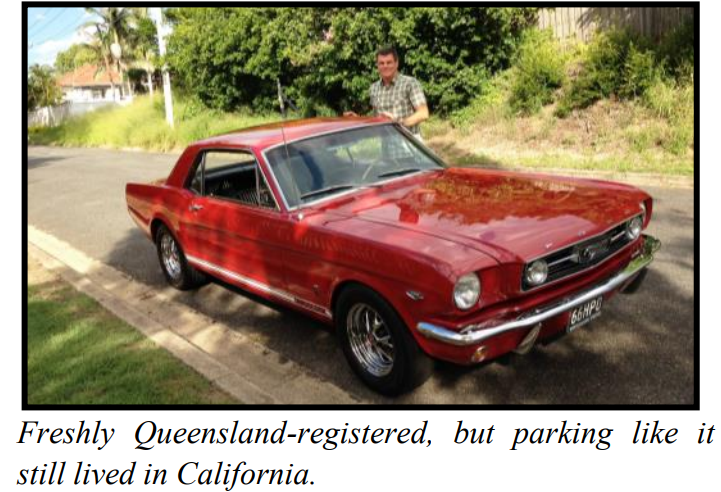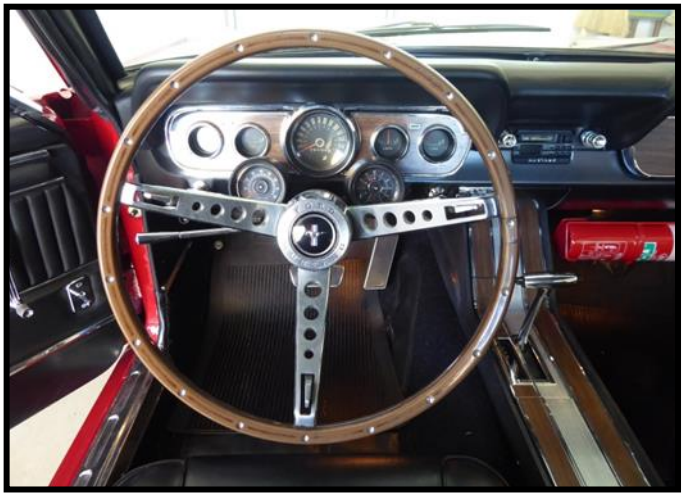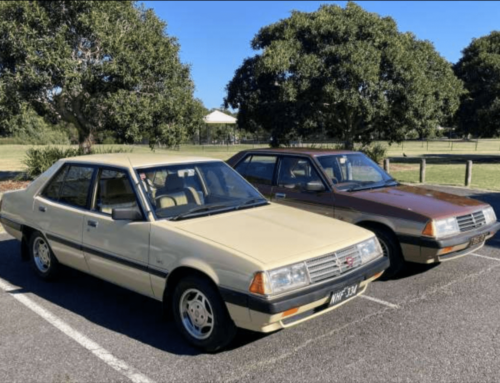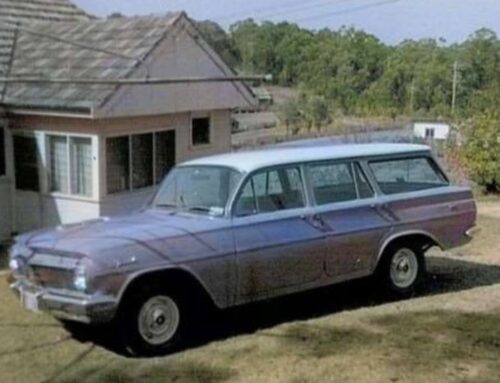1966 Ford Mustang – November 2021 – January 2022 Cover Story
The Ford Mustang was very much a product of its times. Shrewd marketers in the US in the late 1950s and early 1960s had realized that the post-war generation’s members were going to have unprecedented spending power, and they wouldn’t want the same clothes, music and entertainment that their parents did. And they certainly wouldn’t want the same cars. They’d want cars that looked youthful, sleek, sporty and stylish, even if they actually weren’t. Lee Iacocca, fast-rising star at Ford, wanted to put some youthful excitement into a competent but dull product line, and in 1962 announced the two-seater, with a mid-mounted 1,500cc V4, independent suspension and aluminium body. It made its debut in October at the US Grand Prix at Watkins Glen, generating much public excitement.
However Iacocca’s team knew that the Concept Car would be too complex for economic production, but that a more practical four-passenger version with the élan of the Concept Car would be a hit. By 1963 the Chevrolet Corvette had evolved into a truly beautiful car with performance and handling, but its base price of $4,252 was beyond the reach of the average 18 year old. But when the Mustang was launched at the World’s Fair in Flushing Meadows in April 1964 its base price was only $2,368 (compared to the Ford Falcon at $2,118).
The secret to achieving such a low and profitable price was simple: stick a sleek, sexy body with a long bonnet, short rear deck and sharply sculpted flanks (with the now-fake radiator scoops from the Concept Car) onto a dull Ford Falcon chassis and mechanicals, and offer a long list of options. The first Mustang had offered 72 options for body style, engine, transmission, performance equipment, safety etc, as well as 19 colours and 12 trim choices. And whether you had the base model at $2,368 or a fully optioned performance Mustang costing around $1,200 more, they all looked sleek and sporty.
The Mustang made its first racetrack appearance as pace car for the 1964 Indianapolis 500. Ford or dealer-supported Mustangs, heavily modified for drag or circuit racing, were immediately successful in US motor sport. In 1964 Mustangs came first and second in the Touring Car class at the 1964 Tour de France Automobile, a 10-day, 6,400km international rally.
Mustangs were no less successful in competition in Australia, being raced by such luminaries as Bob Jane, Norm Beechey, Ian Geoghegan, Fred Gibson, John Harvey and Allan Moffat. Beechey and Geoghegan won the Australian Touring Car Championship five times from 1965 to 1969, and Mustangs finished second or third in the next three years.
These early memories of the Mustang were stored away until I sold my E-Type Jaguar in 2014 and began looking for a replacement. Mustangs were good looking, probably easier to live with than E-Types, and there were plenty of them available. But what year did I want, and what specification?
The most brutally-handsome Mustang, in my opinion, was the 1969-1970 model, like Allan Moffat’s Trans Am, preferably with the 428 cubic inch Cobra Jet engine. But if you look at the prices these fetch you’ll see why I didn’t follow this dream.
I had preferred the sleek early E-Types like my 1962 hard top to the bulbous later models, and eventually decided on a 1964 to 1966 Mustang for the same reason. Now, what specification should I look for? I’d always preferred the coupe to the fastback or convertible, and that was handy as there were more coupes and they were cheaper. Now, what engine? By 1965 Mustangs came with a 200 cu in (3.3 litre) six or a 289 cu in (4.7 litre) V8 in three versions: a 200hp CCode, 225hp A-Code or the 271hp High Performance engine option: the K-Code. Fewer than one percent of 1964-66 Mustangs were K-Codes, so a K-Code was my first must-have.
My other must-have was the GT package. Available only on A- and K-Codes this included front disc brakes, grille-mounted fog lights, GT gas cap and side badges, Rally-Pac instrument pod with tachometer and clock, increased rate springs, heavy duty shock absorbers, faster steering ratio and larger diameter front stabilizer bar. But the GT feature I most wanted was the twin exhaust trumpets poking through the beaver panel.
I combed carsales.com.au, perused Mustang Owners Club ads, and inspected Mustangs in Sydney and Canberra. I learned a lot, but none that I saw was as exciting as I was hoping for. I’d only seen two K-Codes in my search, both coupes, but neither of them was quite right. If I wanted a good K-Code I was going to have to import it, so through the Mustang Owners Club I found someone with contacts in the US who could act as my agent and locate and inspect suitable Mustangs for me.
In the next few months my agent’s contacts located eight K-Code GTs in the US. He had mechanics assess each one against my criteria, sent me appraisals and photos and gave his recommendations. One car stood out: a 1966 Candyapple Red coupe with black Pony trim, still registered with its original black and yellow California plates. It had been built in the San Jose plant and had fancy chrome number plate frames from Swanson Ford of Los Gatos, so it had probably been sold by them when new.
But it was an automatic, and I’d wanted a manual. However time was not on my side. When I began searching in July 2014 the Australian dollar was around US$0.95, but it had commenced a long slide against the US dollar, making everything in the US more expensive. This had already eroded my Mustang budget by a few thousand US dollars.
Waiting until the agent found a manual could take months, and by then its US price would probably exceed my budget. So I either had to buy the automatic or hope that something would turn up in Australia. My experience gave me little hope of finding a car locally, and by then the red coupe had won me over. Besides, I’d already bought 66HPO plates for it! It turned out to be a great decision. When the car arrived in January 2015 it looked even better in the metal than the photos had shown. I’d applied to the then Department of Infrastructure and Regional Development for approval to import the Mustang in 2014, before asbestos became a concern, and had received approval promptly. Once the car was landed I had my mechanic service it and provide a roadworthiness certificate, and it took only 30 minutes at Wynnum TMR Office to register the car.
I joined the Golden Era Auto Racing club to see what the Mustang was like to drive fast around Lakeside and Queensland Raceway. It handled much better than I’d expected, but seeing a few other drivers prang their valuable cars told me that this wasn’t for me. On a trip to the US in 2015 Jan and I visited the site of Ford’s San Jose plant, where my car was built. It’s now a huge shopping mall, with a plaque commemorating the Ford years. And the site of Swanson Ford, the dealer who sold my car, had been bulldozed. This was sad to see, but since then the auto world had changed beyond belief. In 1966 the Big Three had 90 per cent of the US car market, but since then GM and Chrysler had gone bankrupt and Ford nearly had. Today BMC/Leyland no longer exists, Asian manufacturers dominate the world car market, and more than half of new cars sold in Norway are battery electric.
But throughout this epochal change the Mustang has been a constant, in continuous production since April 1964. After 1970 it lost a lot of its style and performance edge, but has regained it with the current five litre GT. And – shocking to us lovers of V8s – Ford’s first all-electric vehicle is a Mustang, the Mach-E, launched earlier this year.
But the very first high performance Mustang of all was the K-Code, and I consider myself fortunate to have acquired such a beautiful example of perhaps the best-known US car of the 1960s.
Geoff Moran
(autopics.com, Pinterest)
Source : “The Bayside Vehicle Restorers Club Inc. Magazine”



